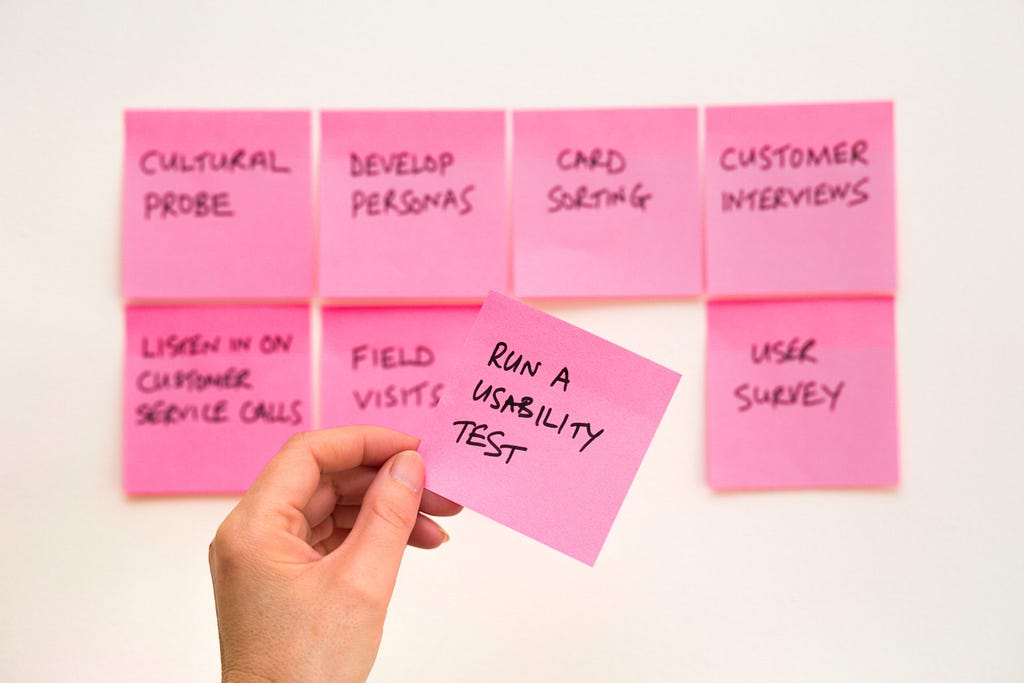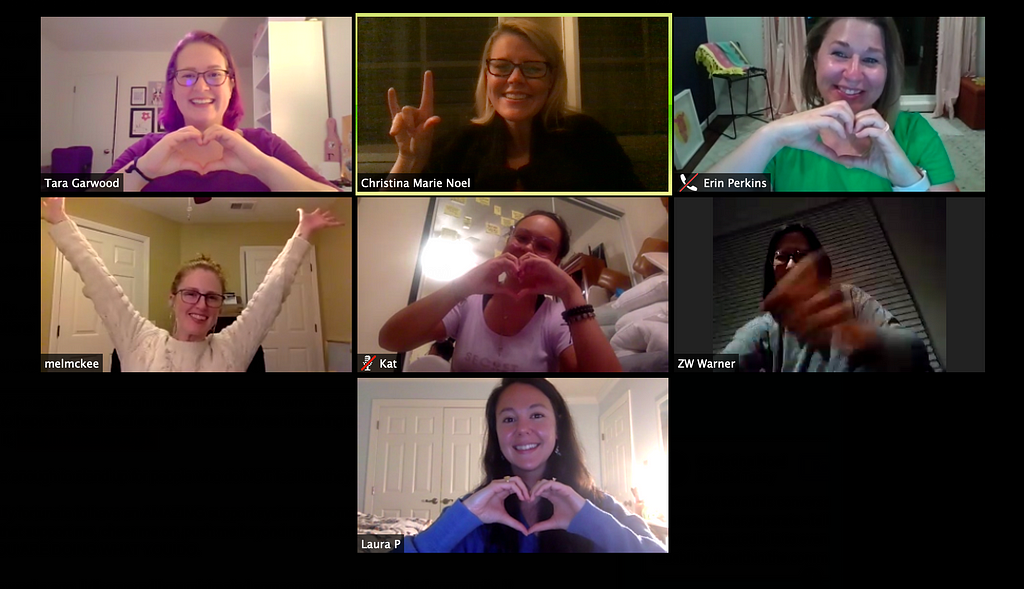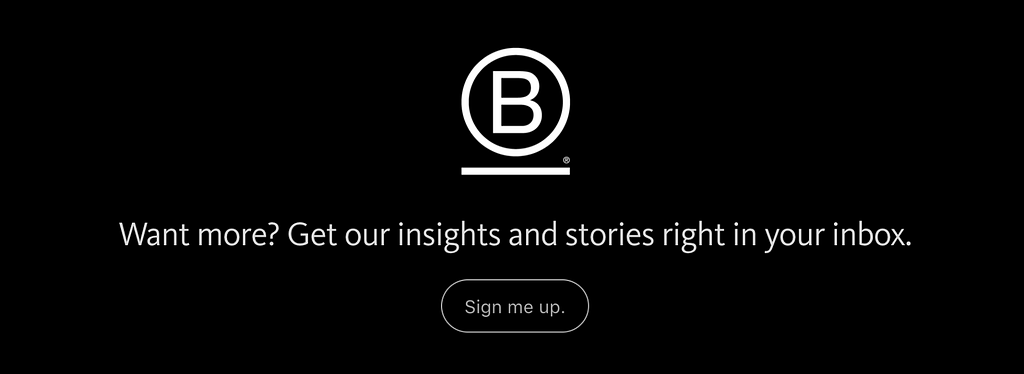
How Transparency, Empathy and Planning Can Create a Path Toward Stability
You’ve probably been thinking to yourself, “So, now what?” Or perhaps you’ve been so busy over the last few weeks you’ve hardly had a chance to breathe.
In light of the global pandemic we’re experiencing, we are all being forced to navigate major changes both in our lives and in our organizations. Many of us recognize that we need to pivot.
Two years ago, I made the choice to upend my life. I wanted to build a social enterprise of my own, and since then I’ve worked diligently to help mission-driven organizations thrive. Through this work, I’ve learned that finding community support is arguably the most important factor in overcoming obstacles. Collectively, we can work together to come out on the other end of this crisis stronger than ever.
While we didn’t choose for our lives to be upended by a global pandemic this year, we can still find success by adjusting our lives and business strategies to this new world we find ourselves living in. The following 10 strategies can help you come out of this crisis stronger than ever and feature helpful resources from inspiring mission-driven leaders.
1. Make time for self-care.
Let’s start by recognizing that a global pandemic is traumatic. We are navigating a lot of uncertainty, our lives have drastically changed, and many of us are making major adjustments. This is inherently stressful. Abide by the oxygen mask rule: You have to put on your oxygen mask first before you’re able to help others. Block time in your schedule for self-care and set reasonable expectations for yourself. Don’t pressure yourself to work at the same pace you were working pre-pandemic. Take deep breaths, go for a walk, or call a friend when you feel overwhelmed. It’s OK if you decide to stop reading the news. Continue to maintain healthy boundaries and put your mental health first. Find reassurance in the fact that we’re all human and we’re all in this together.
If you are a parent with kids who are now learning from home, I highly recommend you check out this amazing article from Alisa Herr, founder and CEO of Unity Web Agency, that shares some of her favorite educational resources for stuck-at-home-kids.

2. Be transparent with your employees.
Now is an opportunity to show leadership. Check-in with your employees and be flexible by meeting them where they are at. Open-book management can be a valuable part of living your mission. If your business is struggling financially, be open about it with your employees. Be clear whether the business has a contingency plan. Ask your employees for their help in identifying creative ways to cut costs or identify new streams of revenue before resorting to laying people off. If you are able to retain employees, it will be your most valuable investment in the future.
There are SBA loans available to cover payroll that may be forgiven as long as you don’t lay off employees. Be sure to explore all options. Check out the site #COVID19CapitalRelief, which is a comprehensive, searchable database—created by CASE at Duke University—of grants, loans, and other cash equivalents to help entrepreneurs, nonprofits, and businesses anywhere in the world. The importance of this resource for entrepreneurs is explained by Cathy Clarke in more detail here. If you ultimately do have to lay off people, be as forthcoming and kind about it as you can.

3. Show empathy for your customers and find opportunities for service.
When communicating with customers, acknowledge what is happening and be sure your marketing also acknowledges that what people are experiencing is challenging. Do this every single time you create content in the upcoming months. This is not business as usual. It’s important to meet people where they are. Also, more than just the message, it needs to be genuine.
As business owners, it’s important we take steps to ensure that our doors stay open, which does mean continuing to offer our products and services. However, it’s also important that we are sensitive to the challenges our customers are navigating.
By being kind and considerate during challenging times, it will deepen the trust and loyalty your customers will have toward your organization. If you have the opportunity to give back, do so.
I’ve seen a handful of organizations offering a “pay-what-you-can/when-you-can” model, and I’m planning to test this model for the accelerator program I run. It’s a powerful way to ensure entrepreneurs are receiving support even if they have limited financial resources. I’ve also seen many organizations—including Certified B Corporations Prosper for Purpose, In Good Co, Impakt, and Pathfinder—offering strategic consultations or workshops without any obligation to help entrepreneurs and small business owners adjust their strategies.

4. Question whether your strategy should fully pivot.
The market is demanding a reaction, but throwing away years of strategy to go in a completely different direction may not make sense. Before making drastic changes, take time to pause and determine the strategic direction you should go in. If there are ways to take your current offerings virtual or opportunities to bridge the gap, by all means do so. However, if you’re going to pivot, make sure it’s going to be a sustainable strategy in the long run.
If you’re feeling stuck, Emma Browning, the founder and managing director at B Corp Paradox Consulting Partners, wrote this terrific article providing a framework she used to determine the best course of action for her organization.
5. Invest time now in planning for the future.
If your current strategy might need to go on hold until the world is able to go back to connecting in-person, consider taking this time to lay the groundwork for success when things ramp up again in the future. Consider:
- What virtual events could you host to serve your community?
- Are there opportunities to collaborate with other organizations that you could begin exploring now?
- Is now a good time to hone your public speaking abilities?
- What market research can you do to set up future projects for success?
- When was the last time you updated your employee handbook?
- What does this experience with remote work mean to your organization in the future?
- What systems can you put in place to save time and resources in the future?
- What people can you network with virtually?
By investing your time wisely, you can hit the ground running once this crisis has passed.

6. Perform customer research.
If you’re thinking about launching a new business or a new product or service, the most important thing to do is take time to understand whether there is truly a demand for what you’re selling. I have seen firsthand many entrepreneurs and organizations waste months and even years of their time building a product or service that no one wants because they didn’t take the time to really understand their customers’ unmet needs.
One of the best ways to gain customer insights is through short customer interviews. Learn to conduct effective customer interviews, and be sure to read The Mom Test. Many of the entrepreneurs that I’ve worked with reported a major “aha moment” from this book. Once you’ve learned how to conduct effective customer interviews, consider setting a goal of trying to set up two or three 10- to 15-minute informational interviews each week.
7. Prototype new products or services.
Don’t be afraid to test new offerings. What new problems are your customers currently facing in this crisis? Are there new customers who could now use your services? Melinda McKee, the founder of Memento & Muse, focuses on helping businesses give clients amazing gifts that feature local and artisanal products. The demand for her company’s gifts is often tied to in-person events. Given this, she came up with the creative idea of investing in supplies to create “work from home” gifts that businesses can purchase for their employees.
Before making large investments in developing a new product or service, I highly recommend creating a prototype first by identifying a way to quickly test whether a concept will work. This could be through a sketch of your vision, testing to determine interest level by marketing a simple advertisement, creating a simplified physical product of what you’d like to sell, or even trying to pre-sell your new service.
8. Work on content creation.
If you have less client work to do, consider creating content. Content marketing is a powerful tool for demonstrating your expertise. In fact, according to one study conducted by Demandmetrics, if you’re not doing content marketing, you’re spending 62% more on traditional forms of marketing and you’re potentially missing out on three times more leads. Consider:
- Have you wanted to write a book to share your big ideas?
- Have you created case studies for the big customer “wins” you had last year?
- Could you develop a white paper or “list builder,” i.e., a well-designed resource that would inspire target customers to want to sign up for your mailing list?
- If you are willing to get creative, you could even consider developing video content.
Don’t only focus your content around coronavirus, because your organization will outlast this pandemic. By taking the time now to write evergreen content that’s relevant regardless of seasonality, it will better set your organization up for success in the future.
9. Find gratitude in the little things.
While there is a lot out of our control right now, one thing we can be intentional about is finding opportunities to practice gratitude. The field of positive psychology is fascinating because it has conducted studies that suggest that positivity actually improves performance. Not convinced? Check out this fascinating (and hilarious) TED Talk by Shawn Anchor. Gratitude doesn’t have to be a huge investment of time. It can be as simple as starting a gratitude journal that you write in for five minutes each day.
After discussing many of the challenges we are facing, we came up with the idea of creating a “happiness” Slack channel for the FYSO accelerator where we’ve been sharing things that make us smile. I’m personally a big fan of reading the Goodnewsletter for a positive “pick me up,” and John Krasinski’s new “Some Good News” YouTube show is delightful.

10. Stay connected and find people or communities that make you feel safe.
You don’t need to go through this alone. Consider hosting virtual coffees, lunches, or happy hours with friends and family. I’ve been hosting virtual lunches on Mondays and Fridays to start and end the week on a high note. During these lunches we’ve created a safe space to connect. We aren’t afraid to get serious, but more often than not we laugh a lot. During our latest lunch, we had 20-minute discussion about our favorite cocktails. We also end most meetings with a “pet parade” where we show off our pets—because who doesn’t love animals? These lunches have often been the highlight of my week. Find opportunities to stay connected even though you’re physically apart from people.
- If you’re part of the B Corp community, the B Hive has an entire group dedicated to supporting each other in light of COVID-19.
- The B Corp women CEOs supporting We the Change are pulling together resources and hosting a weekly webinar that anyone is welcome to join. You can learn more at this website created by Carolina Miranda, the founder and CEO of Cultivating Capital.
- B Corp Ellevate has created a community of professional women committed to helping each other succeed and is accepting applications for squads focused on leading through uncertainty.
- If you’re working to build, grow, or pivot your mission-driven organization and want more strategic support and accountability, consider the FYSO accelerator.
While we are living in unprecedented times, I believe in the power of community. Together we can get through this.
B the Change gathers and shares the voices from within the movement of people using business as a force for good and the community of Certified B Corporations. The opinions expressed do not necessarily reflect those of the nonprofit B Lab.

10 Strategies to Successfully Adjust Your Life and Business in a Time of Crisis was originally published in B The Change on Medium, where people are continuing the conversation by highlighting and responding to this story.